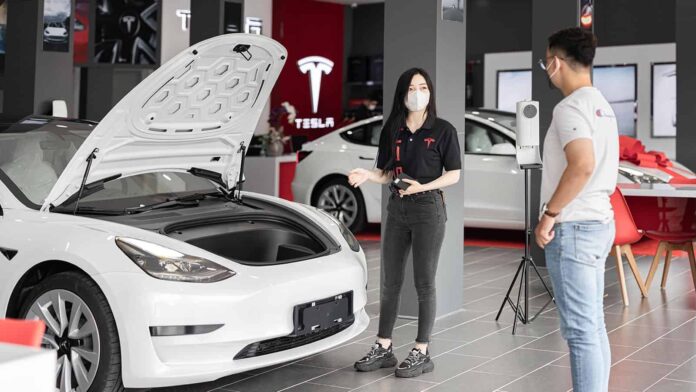“The widespread adoption of electric vehicles (EVs) largely depends on the acceptance of the public. Previous studies pay more attention to the factors affecting EV adoption from the customer perspective but lack the perspective of the interaction between sellers and customers. Based on a survey of 1,014 respondents in China, this work developed a research model analyzing the effect of interaction on the intention to purchase EVs and using experience value (EPV) as the mediating variable. The results showed that the functional experience value (FEV) was positively affected by the environment–customer interaction (ECI). The FEV, emotional experience value (EEV), and social experience value (SEV) were all positively affected by salesman–customer interaction (SCI). In addition, they all had positive impacts on purchasing intention (PI). We further analyzed the differences in the interaction between the different business models. Compared with multi-business model car companies, the ECI for single-business model car companies had a more positive impact on the PI. However, the impact of ECI for single-business model companies on PI was negative. The SCI of single-business model car companies positively impacted the PI, whereas the SCI of multi-business model car companies had no significant impact on the PI. These findings provide insight into further understanding the mechanism of interactions affecting EV adoption and help perfect future promotion strategies” (Li et al., 2023).
The increased presence of electric vehicles in the automotive market has raised many questions for dealerships and the automotive market. Every consumer approaches buying a car with a different perspective and needs that companies have to understand and cater to if they want to keep up with growing trends. Additionally, the increased presence of online car shopping into the market has further complicated and expanded the market.
In this article, quantitative data is used to best describe this phenomenon and to offer suggestions for how car companies and dealerships alike can better shift to accommodate a wide array of consumers. Specifically, this article was looking into the Chinese car market, where government subsidies have largely pushed the growth of the EV market. This article sought to understand how car sales for EVs could move past reliance on these subsidies while still appealing to the average consumer.
What I found the most interesting about this article is that there really wasn’t one clear answer on how to go about this process. Ultimately, each consumer is unique and the car-buying experience varies so much because of modern technology that it’s difficult to pinpoint one specific aspect of the process that needs improvement or is overwhelmingly successful. However this article did highlight that it’s incredibly important that companies stay on top of these varying trends, especially when it comes to online car research and buying. “Car companies could continuously update and develop the function of the online mobile platforms and strive to provide timely and convenient interactions to customers” (Li et al., 2023). It was reassuring for my final to know that everyone approaches the buying and use of their car differently.
References
Electrify News. (2023). Car Dealerships Sabotaging Their Electric Vehicle Sales. https://electrifynews.com/news/auto/car-dealerships-sabotaging-their-electric-vehicle-sales/
Li, W., Wang, M., Cheng, X., & Long, R. (2023). The impact of interaction on the adoption of electric vehicles: Mediating role of experience value. Frontiers in psychology, 14, 1129752. https://doi.org/10.3389/fpsyg.2023.1129752




